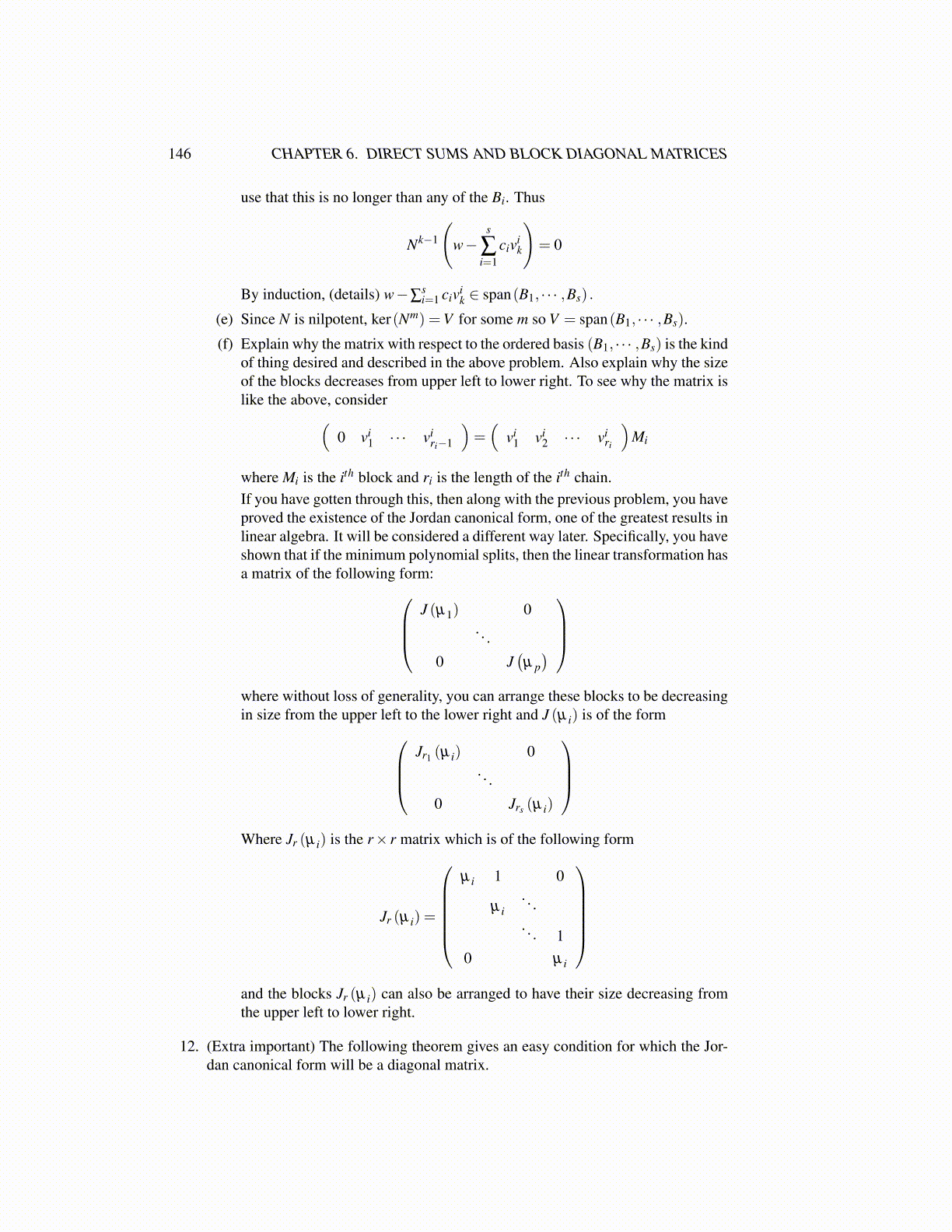
146 CHAPTER 6. DIRECT SUMS AND BLOCK DIAGONAL MATRICES
use that this is no longer than any of the Bi. Thus
Nk−1
(w−
s
∑i=1
civik
)= 0
By induction, (details) w−∑si=1 civi
k ∈ span(B1, · · · ,Bs) .
(e) Since N is nilpotent, ker(Nm) =V for some m so V = span(B1, · · · ,Bs).
(f) Explain why the matrix with respect to the ordered basis (B1, · · · ,Bs) is the kindof thing desired and described in the above problem. Also explain why the sizeof the blocks decreases from upper left to lower right. To see why the matrix islike the above, consider(
0 vi1 · · · vi
ri−1
)=(
vi1 vi
2 · · · viri
)Mi
where Mi is the ith block and ri is the length of the ith chain.If you have gotten through this, then along with the previous problem, you haveproved the existence of the Jordan canonical form, one of the greatest results inlinear algebra. It will be considered a different way later. Specifically, you haveshown that if the minimum polynomial splits, then the linear transformation hasa matrix of the following form:
J (µ1) 0. . .
0 J(µ p)
where without loss of generality, you can arrange these blocks to be decreasingin size from the upper left to the lower right and J (µ i) is of the form
Jr1 (µ i) 0. . .
0 Jrs (µ i)
Where Jr (µ i) is the r× r matrix which is of the following form
Jr (µ i) =
µ i 1 0
µ i. . .. . . 1
0 µ i
and the blocks Jr (µ i) can also be arranged to have their size decreasing fromthe upper left to lower right.
12. (Extra important) The following theorem gives an easy condition for which the Jor-dan canonical form will be a diagonal matrix.